What is AI Literacy & How to Build it with Online Training
What is AI literacy, and why is it important for your organization’s success? Read now to learn how you can make your workforce AI literate via online training.
What is AI literacy, and why is it important for your organization’s success? Read now to learn how you can make your workforce AI literate via online training.
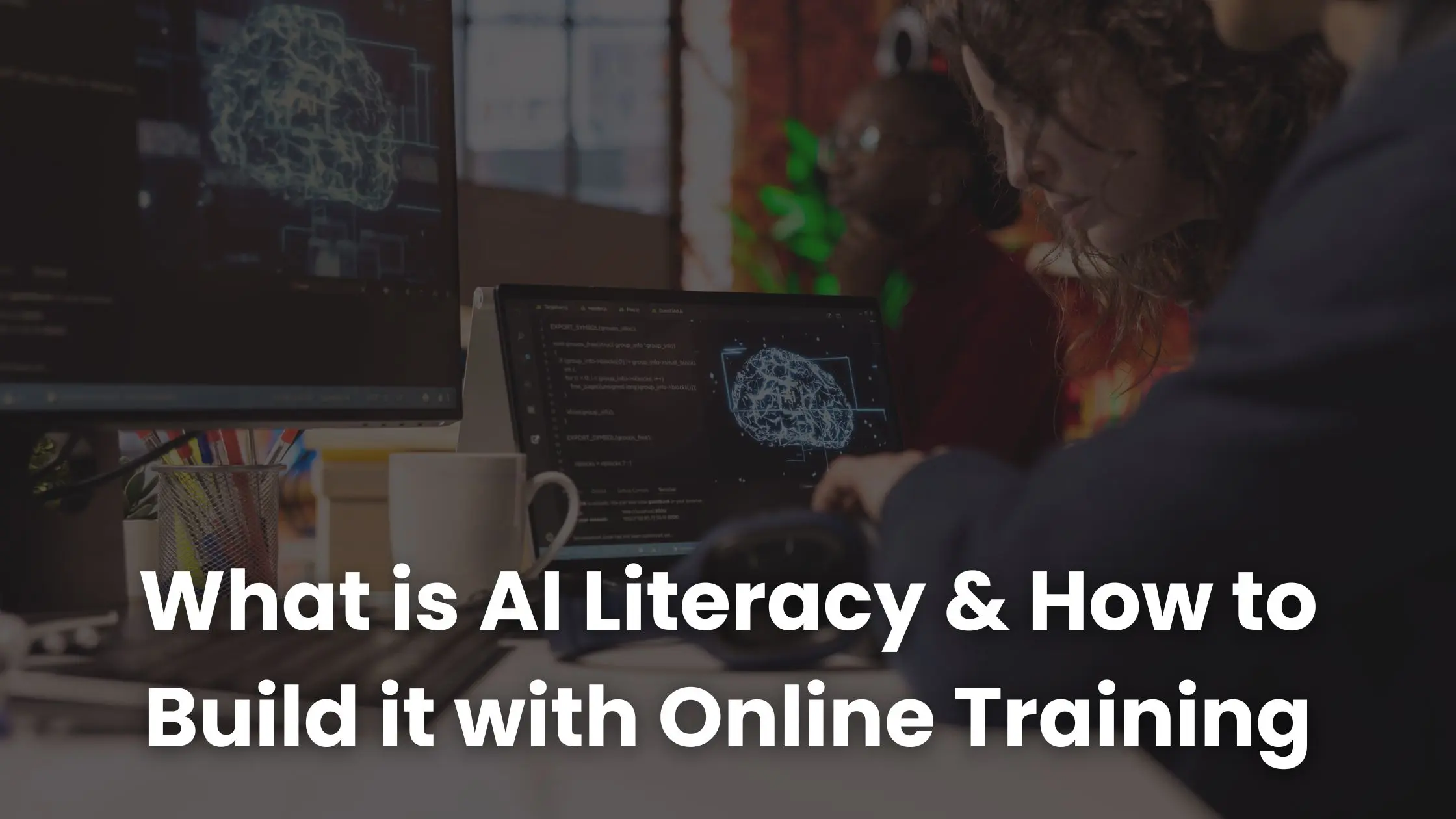
Artificial intelligence (AI) has become a driving force behind innovation and daily operations today. No matter which industry you belong to, you need to understand how AI works to stay competitive and relevant in the market. That’s what AI literacy is.
More than just knowing what AI is, it’s about grasping how to interact with AI ethically and leverage it in real-world situations. Many business leaders acknowledge the importance of AI literacy, with 69% recognizing it as a top priority for workforce development.
AI literacy enables people to become confident in leveraging new technology, which opens up new doors to innovation for the organization. Today, we have many AI-powered online platforms that allow trainers to develop courses and materials for building AI literacy among the workforce.
In this blog, we will dig into what is AI literacy and how businesses and institutions can develop it through online training.

AI literacy refers to the knowledge, skills, and understanding required to use, interpret, and engage with AI systems responsibly. It covers not only technical aspects but also ethical considerations and practical applications.
AI literacy starts with understanding the basic concepts. This includes what AI is, types of AI (reactive, predictive, generative), how AI algorithms work, and their limitations. Then comes the ethical awareness, which involves recognizing biases, privacy concerns, and potential societal impacts of AI.
Once the learner is well-aware of fundamental and ethical parts, they can move on to understanding AI’s real-world implementations. This includes interacting with AI tools effectively, such as crafting effective prompts, evaluating AI-generated outputs, and utilizing AI in informed decision-making.
AI is reshaping workplaces and industries worldwide. As automation and intelligent systems replace or augment traditional job roles, individuals with AI literacy are better prepared to thrive in this new environment.
With an AI-literate workforce, organizations can benefit from informed decision-making supported by AI insights. AI knowledge also enables employees to more easily adapt to technological advances. They don’t feel “left behind” when the business starts to automate more and more of their operations.
AI literacy also supports compliance with emerging regulations, such as the EU AI Act, which mandates training for employees using AI systems. Similarly, in the US, Congress is also working to pass AI regulations on the federal level.
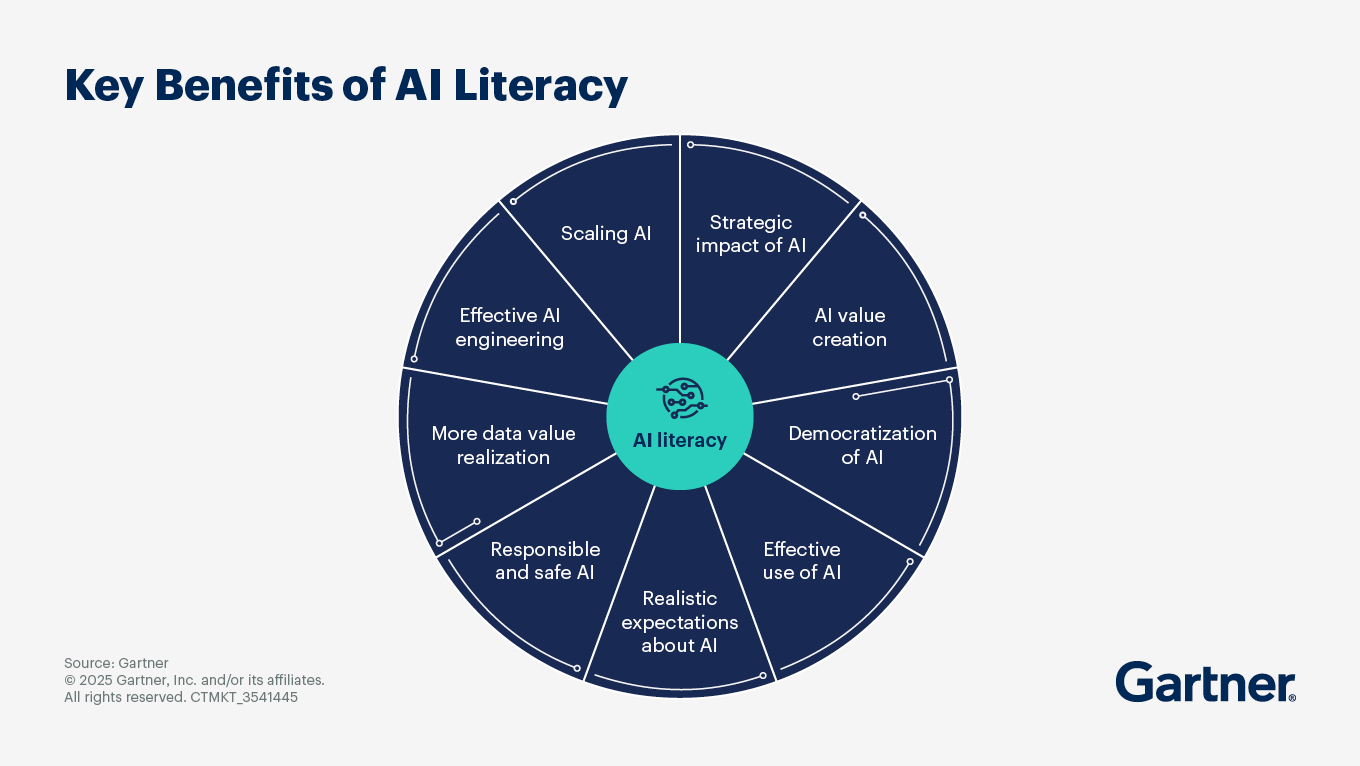
This is why investing in AI literacy is critical for sustainable growth and responsible innovation.
Online training provides an ideal environment for developing AI literacy, particularly given the diverse and rapidly evolving nature of AI technologies. Here is how it addresses many challenges traditional training methods face:
Creating effective AI literacy courses requires not only accurate content but also thoughtful design that engages learners, supports diverse needs, and fosters deep understanding. To help learners understand “What is AI literacy,” follow these steps to build an effective online training course:
Start with well-defined learning goals that specify what learners should know and be able to do by the end of the course. For AI literacy, your objectives should revolve around understanding AI fundamentals, recognizing ethical considerations, and gaining hands-on experience with AI tools.
Having clearly mapped objectives in the beginning will help you align content, activities, and assessments effectively.
With a content plan in hand, the next step is to transform it into a training course. For that, you can use any reliable AI course builder. Let’s take Coursebox here as an example.
In Coursebox, you have to describe your course topic or title at the first step. For an AI literacy course, you can write “AI literacy for managers and employees” and click on “Next”.
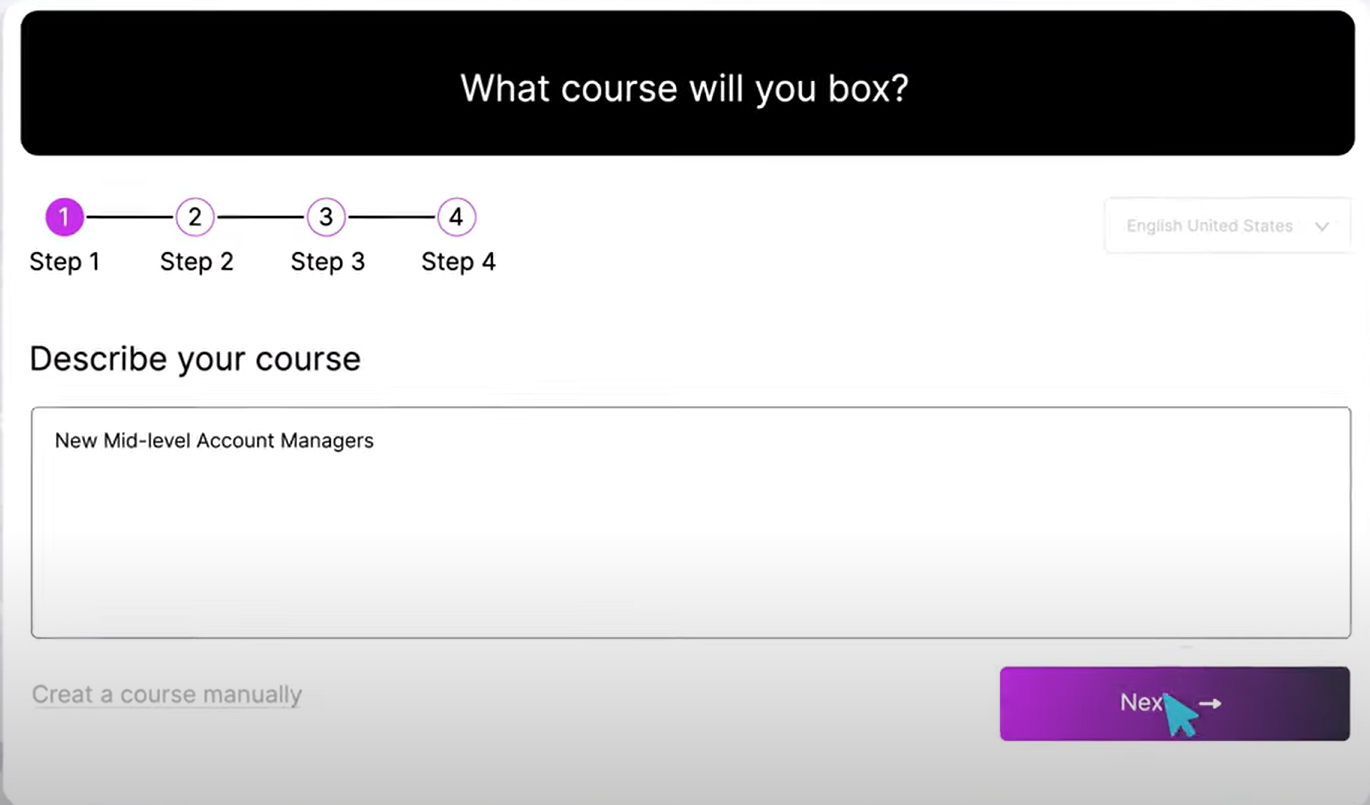
At the next step, you can drop all of the materials, resources, and ideas that you want to be a part of the course. It could be a PPT file, a Word file, or even YouTube links on topics such as “what is AI literacy,” how the technology works, ethical risks, practical implications, future trends, and more.
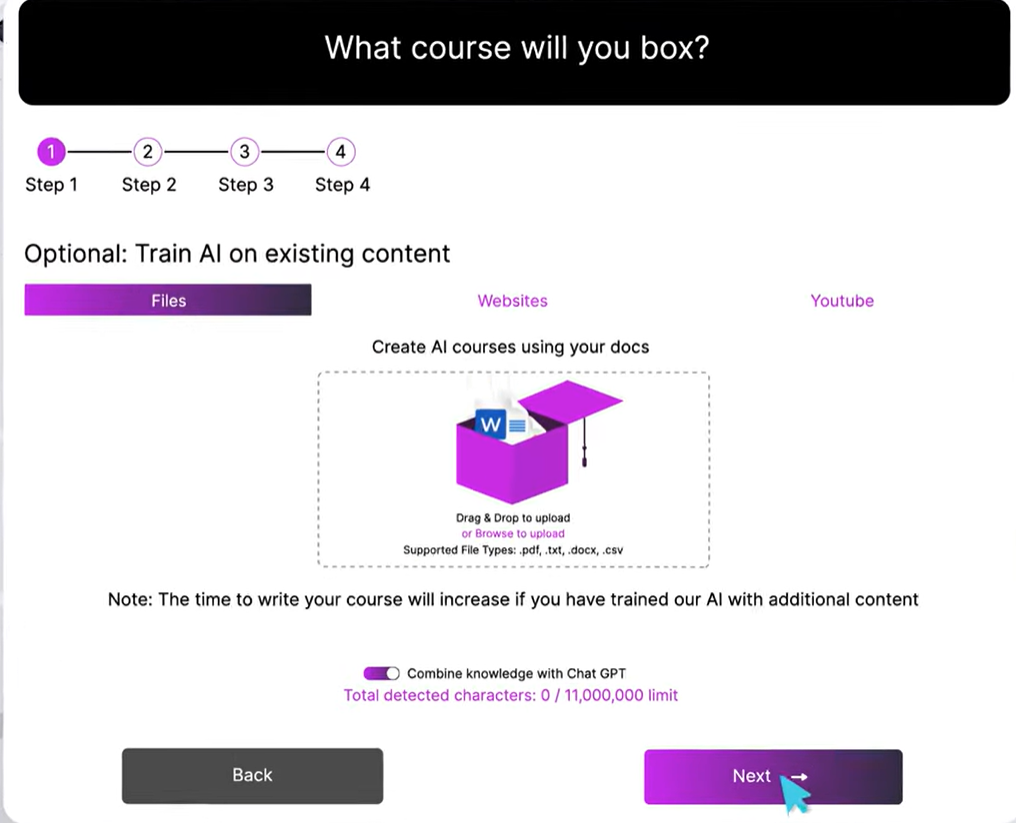
The next step is to describe your learners and their backgrounds. This will enable the AI platform to create a course tailored to their knowledge levels.
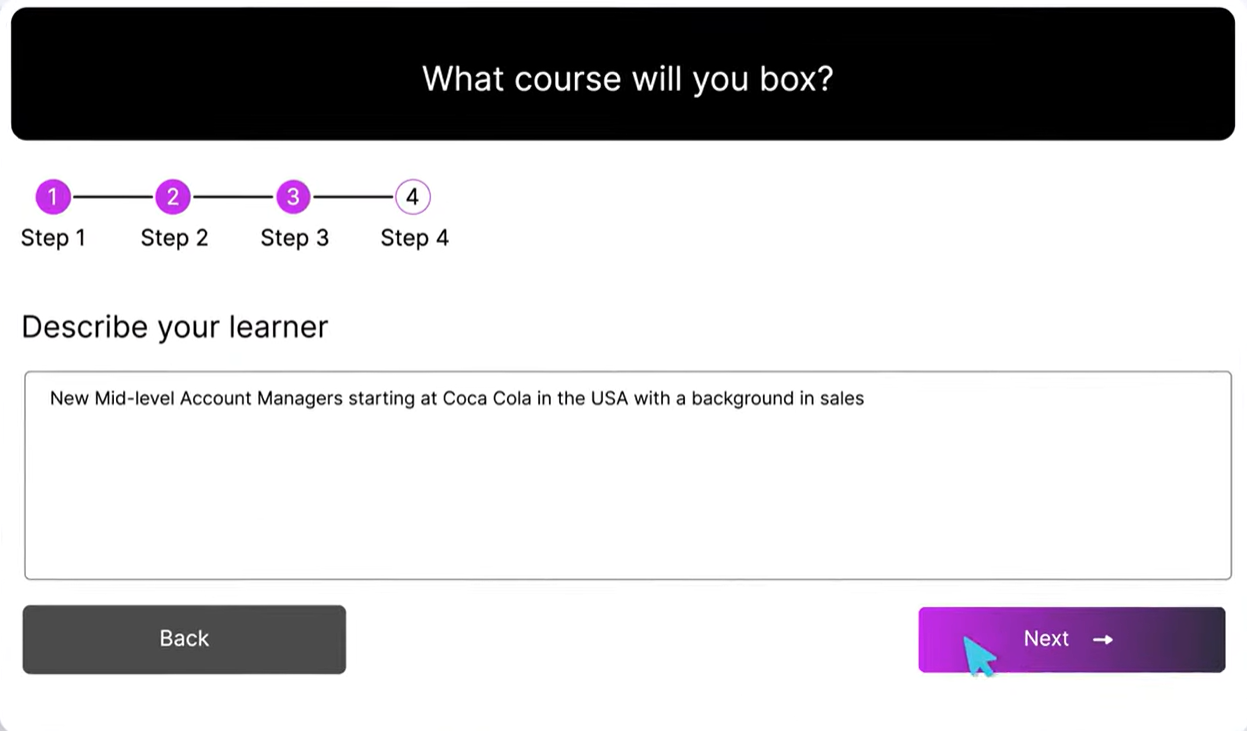
The final step is defining the course structure. You can choose as many questions, assessments, lessons, and quizzes for the AI literacy course, click on “Next,” and Coursebox will create a comprehensive course in minutes.

Utilize AI-driven features, such as adaptive learning paths and chatbot support, to deliver personalized experiences to your learners. Adaptive technology adjusts the difficulty and pacing based on the learner's progress. On the other hand, real-time AI chatbots provide instant clarification and simulate tutoring support.
When creating an AI literacy course, ensure that you balance videos, readings, interactive quizzes, flashcards, and real-world case studies to accommodate different learning styles. Multimedia and active learning materials promote better retention compared to passive content consumption alone.
For example, explain complex AI concepts using animated videos and reinforce them with scenario-based quizzes.
AI literacy isn’t just technical. It’s also deeply connected to ethical issues like bias, privacy, and fairness. Therefore, include dedicated modules that discuss these topics with real-world examples to build learner awareness and critical thinking.
Encouraging reflection and debate enhances engagement and responsible attitudes toward AI.
Frequent low-stakes quizzes and micro-assessments help learners self-check understanding and receive timely feedback. Automated grading systems, like those in Coursebox, support quick evaluation and reinforce learning without burdening instructors or learners. So, make sure to make use of it.

Collect learner feedback and use analytics to identify engagement patterns, knowledge gaps, and areas for course enhancement.
You can use AI analytics tools, which offer insights into learner behavior and outcomes. Doing so will inform you about iterative course design improvements so you can ensure the effectiveness of your AI literacy course over time.
Another way to measure the impact of the course is by evaluating the effects of AI literacy on workplace performance and compliance. If your workforce is leveraging AI solutions more efficiently than before, your efforts may already be yielding you the results.
You can also calculate the return on investment (ROI) by correlating training completion with business metrics, such as productivity or error reduction. However, do this only if you’re sure you’re doing it right.
So, what is AI literacy? It is no longer a niche skill but a fundamental competency for modern work and life. Building it through accessible, engaging online training programs is essential for employees, employers, and educators alike.
Coursebox’s all-in-one AI-powered platform offers a streamlined way to create, deliver, and manage AI literacy courses that empower learners and future-proof organizations.

Start building AI literacy with Coursebox today. Sign up for free now to unlock the full potential of AI for understanding AI!
AI literacy is the ability to understand and effectively interact with AI systems. It involves knowing how AI works, its potential benefits, limitations, and ethical considerations. Being AI literate means making informed decisions when using AI tools, understanding their outputs, and recognizing biases or errors.
AI literacy training is essential for anyone who interacts with or works alongside AI systems, including employees, managers, educators, and contractors. As AI tools become integrated into many roles, having a foundational understanding helps people use these systems safely and efficiently.
AI literacy enables individuals and organizations to adapt to a rapidly evolving technological landscape. It ensures that AI technologies are used responsibly, thereby reducing the risks associated with bias, privacy breaches, and misuse. For businesses, literate employees can leverage AI to enhance productivity, drive innovation, and inform better decision-making.
Online training offers flexible, accessible, and scalable methods for learning about AI concepts and practices. It allows learners to study at their own pace, access diverse multimedia content, and receive immediate feedback through AI-powered tools. This method supports personalized learning paths tailored to skill levels and job roles.
Coursebox streamlines AI literacy training with AI-generated content, interactive chatbots, and automated grading, making training both efficient and engaging. The platform enables the quick creation of courses from existing materials and supports personalized learning experiences. Learners receive instant support and feedback.
Effective AI literacy courses cover foundational AI concepts, ethical considerations, and practical skills for interacting with AI tools. Including real-world case studies and scenario-based activities helps learners relate theory to practice. Courses should incorporate frequent assessments with instant feedback to reinforce learning.
